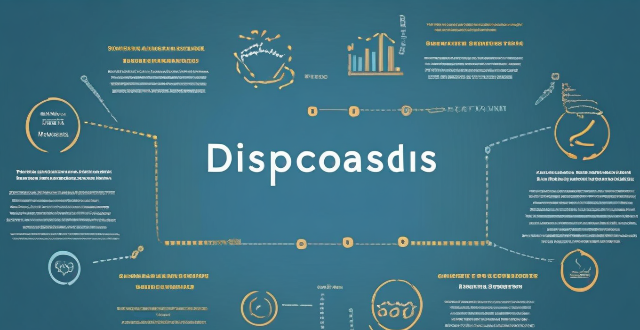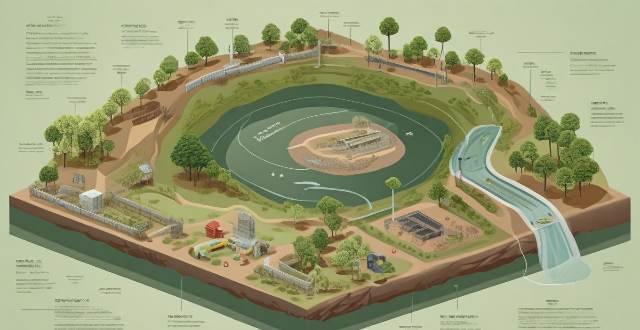Layer Ozone

What is air quality monitoring and why is it important ?
Air quality monitoring is crucial for public health, environmental protection, and socio-economic decision making. It involves measuring pollutants like particulate matter, nitrogen dioxide, sulfur dioxide, carbon monoxide, and ozone to assess their impact on human health, the environment, and society. Poor air quality can cause respiratory diseases, cardiovascular problems, nervous system disorders, developmental issues in children, and increase cancer risks. It also contributes to acid rain, ozone depletion, habitat destruction, and global warming. Socio-economically, poor air quality leads to increased healthcare costs, lost work days, reduced tourism, and lower property values. Air quality monitoring data helps individuals make informed decisions, governments create regulations, and influence public policy.

What international agreements have been made to address climate change ?
The text discusses the importance of international agreements in addressing climate change, which is a global issue. These agreements include the United Nations Framework Convention on Climate Change (UNFCCC), the Kyoto Protocol, the Paris Agreement, and the Montreal Protocol on Substances that Deplete the Ozone Layer. The UNFCCC provides a framework for negotiating specific climate change agreements, recognizing that developed countries should take the lead in combating climate change. The Kyoto Protocol sets binding targets for industrialized countries to reduce their greenhouse gas emissions. The Paris Agreement aims to strengthen the global response to climate change by keeping the increase in global temperatures well below 2 degrees Celsius above pre-industrial levels. The Montreal Protocol on Substances that Deplete the Ozone Layer has had significant positive impacts on climate change mitigation as well.

What are the implications of climate variability for human health ?
Climate variability significantly affects human health through direct and indirect effects. Direct effects include extreme weather events like heatwaves, cold spells, intense rainfall, storms, hurricanes, wildfires, and ozone layer depletion, which can lead to various health issues. Indirect effects involve waterborne diseases, food security problems due to changes in crop yields and pest spread, and mental health issues related to displacement and economic stress. Mitigating climate change and adapting to its impacts are crucial for protecting public health.

How do weather conditions affect air quality ?
Weather conditions significantly affect air quality by influencing the dispersion, accumulation, and transformation of pollutants. High temperatures can increase ozone levels, while low temperatures can trap pollutants near the ground. Wind helps disperse pollutants, improving air quality, but calms can lead to pollutant buildup. Precipitation, like rain and snow, can wash pollutants from the air. High humidity promotes ozone formation but aids in particle removal, whereas low humidity inhibits some pollutants and suspends dust. Temperature inversions trap pollutants, degrading air quality, while cold fronts and storms can clean the air through winds and precipitation.

What role do international agreements play in shaping national climate and environmental policies ?
International agreements significantly influence national climate and environmental policies by providing a platform for global collaboration, setting shared objectives, establishing guidelines, promoting cooperation, and enhancing transparency and accountability. Examples include the UNFCCC, CBD, Basel Convention, Montreal Protocol, and Ramsar Convention, which have shaped policies on climate change mitigation, biodiversity conservation, waste management, ozone layer protection, and wetland preservation, respectively. These agreements are crucial for addressing global environmental challenges and driving progress towards sustainability.

What type of clothing should I pack for a week-long hiking trip ?
When packing for a week-long hiking trip, consider weather conditions, terrain, and activities. Layering is key, with essential layers including moisture-wicking shirts, lightweight pants or shorts, fleece jackets or vests, warm pants, and a waterproof and windproof jacket. Proper footwear is crucial, such as hiking boots, trail runners, and sandals. Don't forget accessories like hats, gloves, sunglasses, neck gaiters, and trekking poles. Additional items to consider include rain gear, extra layers, a towel, and a headlamp or flashlight. Pack smart and only bring what you need to avoid unnecessary weight.

What type of clothing is suitable for winter sports activities ?
When engaging in winter sports activities, it is crucialWhen engaging in winter sports activities, it is crucial ensure comfort, safety, and it is crucial to dress appropriately to ensure comfort, safety, and protection from the cold weather. Here's a detailed guide on what type of clothing is suitable for various winter sports: ## **Essential Layering System** ### **Base Layer:** - **Material:** Moisture-wicking fabrics like synthetics or merino wool. - **Purpose:** To keep sweat away from your body and maintain body temperature. - **Example:** Long-sleeve thermal shirts and tights. ### **Mid Layer:** - **Material:** Insulating fabrics like fleece or down. - **Purpose:** To provide warmth and insulation. - **Example:** Fleece jackets or lightweight down vests. ### **Outer Layer:** - **Material:** Waterproof and breathable fabrics like Gore-Tex. - **Purpose:** To protect against wind, snow, and rain while allowing moisture to escape. - **Example:** Waterproof ski jackets or snowboard pants. ## **Head-to-Toe Gear** ### **Headgear:** - **Beanie or helmet liner:** To keep your head warm and protected under a helmet. - **Neck gaiter or scarf:** To cover your neck and face from cold winds. ### **Handwear:** - **Gloves or mittens:** Waterproof and insulated to keep hands warm and dry. - **Glove liners:** Thin gloves worn underneath for added warmth. ### **Footwear:** - **Waterproof boots:** Insulated boots that are waterproof and provide good traction. - **Socks:** Thick, warm socks made of wool or synthetic blends. ### **Legwear:** - **Waterproof snow pants:** To keep your legs dry and protected from the snow. - **Base layers for legs:** Long underwear or tights for added warmth. ### **Eye Protection:** - **Goggles:** Protective goggles that shield your eyes from glare and UV rays. - **Sunglasses:** Polarized sunglasses for cloudy days or less intense activities. ## **Additional Accessories** - **Helmet:** Essential for activities like skiing and snowboarding to protect your head from impacts. - **Neck warmers:** Can be added for extra warmth around the neck area. - **Gaiters:** Helpful for keeping snow out of boots and pants. By following this comprehensive guide, you can ensure that you have the right clothing and gear for enjoying your favorite winter sports safely and comfortably. Remember, layering is key to adapting to changing temperatures and activity levels throughout the day.

How does air pollution affect the environment ?
The text discusses the impact of air pollution on the environment and outlines strategies to mitigate its effects. It highlights how air pollution contributes to climate change through greenhouse gas emissions and ozone depletion, degrades ecosystems through acid rain and habitat loss, affects human health by causing respiratory and cardiovascular diseases, reduces visibility with smog and haze, and leads to economic consequences such as crop damage, increased healthcare costs, and a decline in tourism. Mitigation strategies include transitioning to renewable energy sources, promoting efficient transportation, enforcing industrial regulations, implementing urban planning, and cooperating through international agreements.

How do energy-efficient buildings contribute to sustainability ?
Energy-efficient buildings contribute to sustainability by reducing energy consumption, decreasing greenhouse gas emissions, and conserving natural resources. These buildings use less energy for heating, cooling, and lighting, resulting in lower energy bills and reduced carbon footprints. They also incorporate features like improved ventilation systems and water-saving technologies to improve air quality and conserve water resources. By using renewable materials and minimizing waste, these buildings help conserve natural resources and reduce landfill waste. Overall, energy-efficient buildings play a crucial role in achieving sustainability and protecting our planet for future generations.

How does climate change affect the priorities in environmental monitoring ?
Climate change significantly impacts the priorities in environmental monitoring by necessitating a focus on rising sea levels, extreme weather events, changes in biodiversity, impacts on agriculture and food security, and air quality issues. Addressing these challenges requires a comprehensive approach that incorporates regular monitoring, early warning systems, adaptation strategies, and effective conservation planning.

Can you teach me how to layer different liquors in a drink ?
Layering liquors in a drink is a fun and visually appealing way to create a cocktail. Here's a step-by-step guide on how to do it: Materials Needed: - Clear glass or jar - Spoon - Different liquors of varying densities Steps: 1. Choose your liquors: Select three or more liquors that have different densities. The general rule is that the heavier liquid goes at the bottom and the lighter one on top. 2. Chill your liquors: Chill your liquors before starting. This will help them mix less when pouring. 3. Pour the first liquor: Pour the heaviest liquor into the glass first. Tilt the glass slightly and slowly pour the liquor down the side of the glass. 4. Use a bar spoon: Use the spoon to gently place it at the surface level of the first liquor. Gently pour the second liquor over the rounded part of the spoon. 5. Repeat with other liquors: Repeat the process with the other liquors, making sure to always pour over the spoon and down the side of the glass. 6. Enjoy your layered drink: Once all layers are added, enjoy your visually appealing cocktail!

What are the potential risks and drawbacks of geoengineering ?
Geoengineering, also known as climate engineering, refers to the deliberate large-scale manipulation of the Earth's climate system to counteract the effects of global warming. While it is still a theoretical concept, there are potential risks and drawbacks associated with its implementation. One of the biggest concerns about geoengineering is that it may have unintended consequences that could be worse than the problem it was intended to solve. For example, injecting sulphate aerosols into the stratosphere to reflect sunlight back into space could potentially deplete the ozone layer, leading to increased exposure to harmful UV radiation. Another risk is that some forms of geoengineering may have irreversible effects on the environment. Once implemented, it may be difficult or impossible to reverse the changes made, even if the original goal was achieved. This could lead to long-term damage to ecosystems and biodiversity. Geoengineering raises important ethical questions about who has the right to make decisions about manipulating the planet's climate. There are concerns that wealthy nations might use geoengineering to protect their own interests at the expense of poorer countries that are more vulnerable to climate change impacts. If something goes wrong with a geoengineering project, who would be held accountable? Determining liability for any negative consequences of geoengineering would be complex and controversial, especially if multiple parties were involved in its development and implementation. Some proposed geoengineering techniques may not be scalable enough to have a significant impact on global temperatures. For instance, ocean fertilization, which involves adding iron or other nutrients to stimulate plankton growth and enhance carbon uptake by oceans, may only work in certain regions and not be effective globally. Implementing large-scale geoengineering projects would require significant financial resources and ongoing maintenance. The cost-effectiveness and sustainability of such projects over the long term are unknown and could prove prohibitive for many countries. The public perception of geoengineering is likely to vary widely depending on cultural, religious, and political beliefs. Some people may view it as a "quick fix" for climate change while others may see it as an unnatural interference with nature. This could lead to social conflict and opposition to its implementation. Given the global nature of climate change, any attempt at geoengineering would require international cooperation and coordination. However, reaching consensus among diverse nations with different priorities and interests could prove challenging and time-consuming.

Can national governments alone tackle the issue of climate change, or is international cooperation necessary for effective global climate governance ?
Climate change is a complex issue that requires global cooperation to effectively tackle. While national governments can implement policies and invest in research within their borders, the interconnectedness of climate change factors necessitates international collaboration. Global agreements, technology transfer, and financial support are crucial components of this cooperation. Ultimately, a combination of national efforts and international partnerships is needed for effective climate governance.

What are some examples of gases that contribute to the greenhouse effect ?
The greenhouse effect is a natural process that warms the Earth's surface. Human activities have increased the concentration of certain gases in the atmosphere, leading to an enhanced greenhouse effect and global warming. Major greenhouse gases include carbon dioxide (CO2), methane (CH4), nitrous oxide (N2O), fluorinated gases, ozone, and water vapor. These gases trap heat in the Earth's atmosphere and contribute to global warming. Reducing emissions of these gases is essential to mitigate climate change and its impacts on ecosystems, societies, and economies worldwide.

What are the most common pollutants measured in air quality monitoring ?
Air quality monitoring is crucial for identifying pollutants that can harm human health and the environment. The most common pollutants measured include particulate matter, nitrogen oxides, sulfur dioxide, carbon monoxide, ozone, and volatile organic compounds. These pollutants can cause respiratory problems, contribute to smog and acid rain, and have negative impacts on crops and vegetation. By tracking these pollutants, governments and organizations can take steps to reduce their emissions and improve air quality.

Are there any environmental concerns with the disposal of zinc-carbon batteries ?
Zinc-carbon batteries, widely used in everyday devices, pose significant environmental concerns due to the presence of hazardous materials and disposal challenges. To mitigate these concerns, it is recommended to educate the public, improve recycling infrastructure, and support research and development of alternative battery technologies.

How often should air quality monitoring be conducted ?
Air quality monitoring is crucial for ensuring safe and healthy air, with the frequency of such monitoring influenced by various factors. Urban areas typically require daily monitoring due to high pollution levels, while rural areas may only need weekly or monthly checks. Special situations, like emergencies or natural disasters, might necessitate continuous monitoring. The goal is to balance between tracking long-term trends and identifying short-term spikes in pollution, all while considering available resources.

What are some examples of successful climate debt repayment programs ?
Climate debt repayment programs aim to address the disproportionate impact of climate change on vulnerable communities and countries. Successful programs include the Green Climate Fund, Global Environment Facility, World Bank's Climate Investment Funds, and African Development Bank's Africa Adaptation Initiative. These programs provide financial support and resources for adaptation, mitigation, and sustainable development projects in developing countries. Key features include funding for biodiversity conservation, land degradation prevention, private sector involvement, and disaster risk reduction.

Can climate change lead to an increase in cardiovascular diseases ?
The article discusses the relationship between climate change and cardiovascular diseases, highlighting how extreme heat events, changes in air quality, and extreme weather patterns can contribute to an increase in heart-related illnesses. It explains how dehydration and electrolyte imbalances caused by heat stress can strain the heart, leading to chest pain, shortness of breath, and even heart failure. The article also points out that rising temperatures can cause pollutants like ozone and particulate matter to become more concentrated in the air we breathe, irritating the lungs and reducing oxygen uptake, which can strain the heart. Additionally, extreme weather events like hurricanes, floods, and wildfires can have both direct and indirect effects on cardiovascular health by causing physical trauma, stress, lack of access to medical care, and disruptions in medication adherence and continuity of care for those with chronic cardiovascular diseases. The article concludes by emphasizing the importance of taking steps to protect cardiovascular health, such as staying hydrated during hot weather, monitoring air quality, and having emergency plans in place for natural disasters.

How do fuel vehicles contribute to air pollution ?
Fossil fuel vehicles release harmful gases and particulate matter, contributing to air pollution, climate change, and health issues. Measures to reduce their impact include improving fuel quality, enhancing vehicle efficiency, and promoting alternative transportation methods.